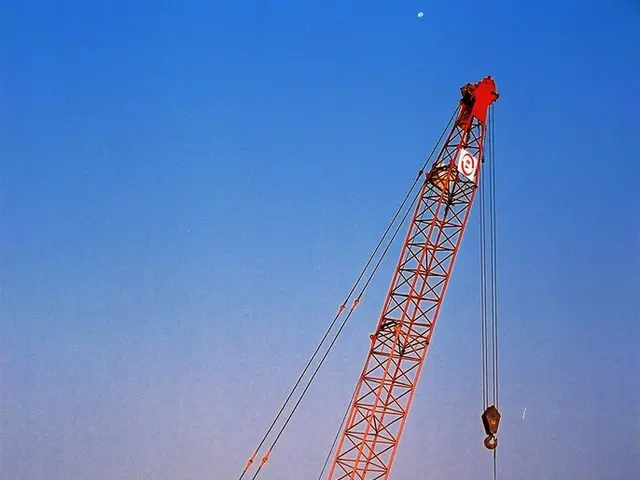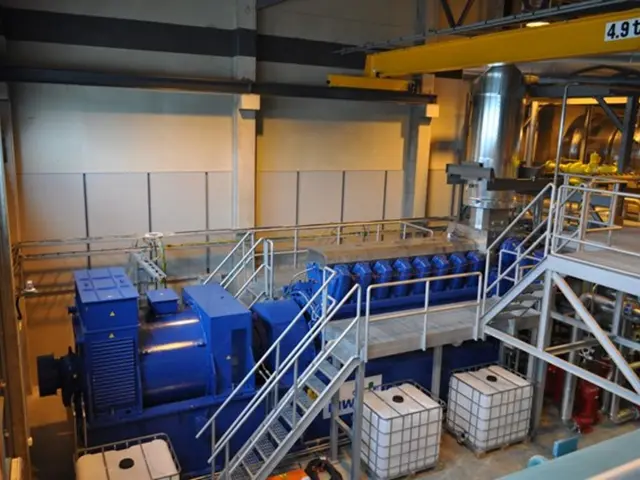Rising Gazprom Gas Prices: What to Expect
European gas prices may soar by as much as 60% during winter months.
In Moscow, Gazprom announced an expected surge of up to 60% in gas prices, potentially reaching $4,000 per 1,000 cubic meters. This steep rise is predominantly due to dwindling exports and production as a result of Western sanctions related to the Ukraine conflict.
Gazprom justified this prediction by pointing towards current European spot gas prices hovering around $2,500 per 1,000 cubic meters. If this trend continues unabated, prices could soar even higher this winter, the company warned. One of Gazprom's routes to Europe has been closed in Ukraine, adding to their woes. Additionally, the company has reduced the capacity of the Nord Stream 1 pipeline to Germany to around 20%, involved in a dispute with German conglomerate Siemens Energy over a gas turbine.
Gazprom's gas exports have seen a steep drop of 36.2% between January 1 and August 15, amounting to 78.5 billion cubic meters. The company's production has also taken a hit, decreasing by 13.2% to 274.8 billion cubic meters during the same period. August alone saw a dramatic 32.2% drop in production, following a 35.8% decrease in July, according to economist Yevgeny Suvorov of CentroCreditBank. The export decline has accelerated to 59%.
The repercussions of these high energy prices can be seen in the Netherlands, where wholesale gas prices hit a record high of nearly €335 per megawatt hour (MWh) in the spring. Prices have since dropped to around €226, but still remain significantly elevated compared to last year, when they were approximately €46 per MWh. These sky-high energy prices are stoking inflation in Germany and other European countries. Experts predict that Germany's inflation rate could reach double-digit figures this fall.
Insights:
- Gazprom has not been directly sanctioned by the EU, US, or UK, but its market share in the EU has decreased significantly, accounting for less than 19% of total EU gas inflows in 2024 compared to about 40% in 2021[1][4].
- Russian LNG imports to Europe have increased despite reductions in pipeline gas, with a majority being directed to France, Spain, and Belgium[2].
- The EU is planning to phase out Russian gas by 2027, though this is not a binding commitment. Sanctions could be delayed to prevent price spikes[1].
- The EU is diversifying its energy sources, with anticipated increases in LNG imports from the US, Canada, and Qatar by 2026-28, potentially helping stabilize prices during the transition[1].
- A return of Russian gas to Europe via Ukraine is a possibility, but political opposition from several European countries complicates this scenario[1].
- Gazprom, due to reduced pipeline exports to Ukraine and a dispute with Siemens Energy, has cut the capacity of the Nord Stream 1 pipeline to Germany by approximately 80%.
- The energy industry, particularly finance and the European gas market, may experience significant change as high energy prices caused by Gazprom's reduced gas exports could lead to increased inflation in countries like Germany.
- Despite the decrease in Gazprom's pipeline gas exports, Russian LNG imports to Europe, destined for countries such as France, Spain, and Belgium, have increased.
- Experts predict that the EU's efforts to phase out Russian gas by 2027 could be delayed to prevent price spikes, while the EU diversifies its energy sources to potentially include increased LNG imports from countries like the US, Canada, and Qatar.








